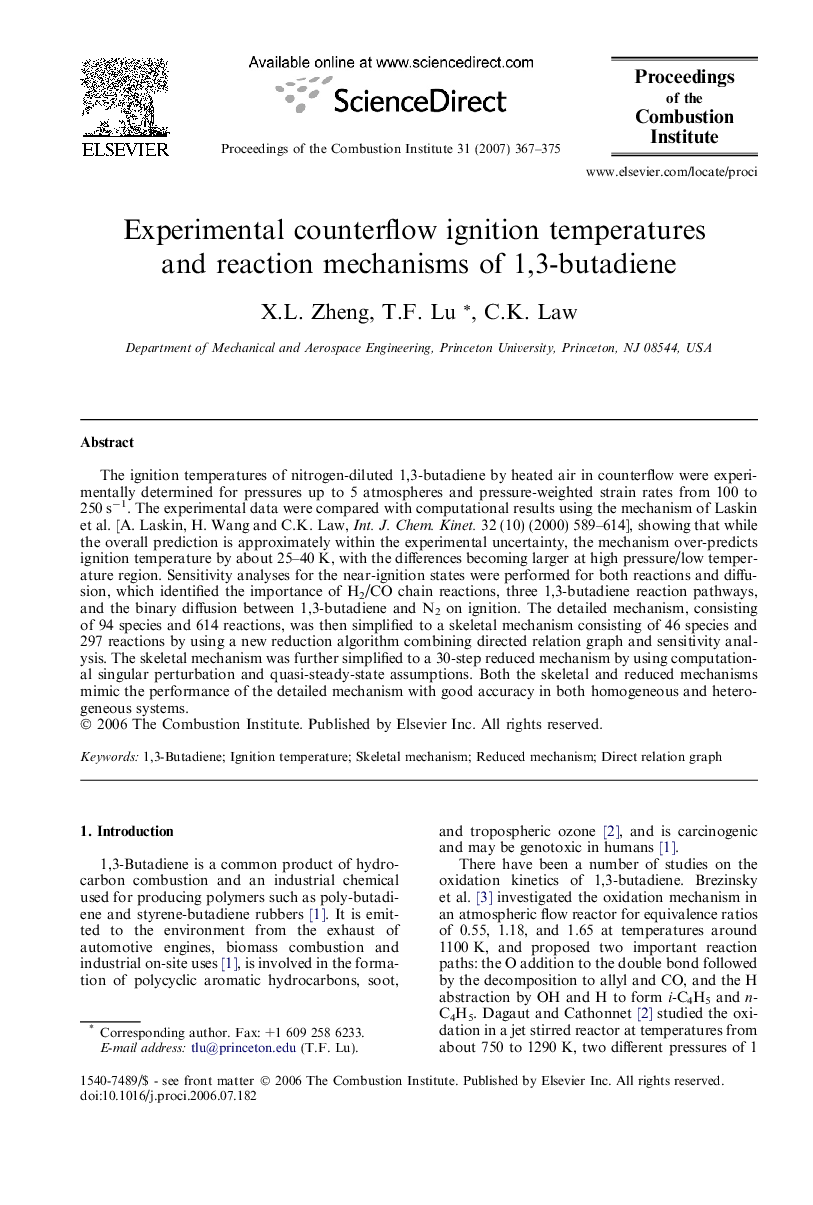| Article ID | Journal | Published Year | Pages | File Type |
|---|---|---|---|---|
| 240740 | Proceedings of the Combustion Institute | 2007 | 9 Pages |
The ignition temperatures of nitrogen-diluted 1,3-butadiene by heated air in counterflow were experimentally determined for pressures up to 5 atmospheres and pressure-weighted strain rates from 100 to 250 s−1. The experimental data were compared with computational results using the mechanism of Laskin et al. [A. Laskin, H. Wang and C.K. Law, Int. J. Chem. Kinet. 32 (10) (2000) 589–614], showing that while the overall prediction is approximately within the experimental uncertainty, the mechanism over-predicts ignition temperature by about 25–40 K, with the differences becoming larger at high pressure/low temperature region. Sensitivity analyses for the near-ignition states were performed for both reactions and diffusion, which identified the importance of H2/CO chain reactions, three 1,3-butadiene reaction pathways, and the binary diffusion between 1,3-butadiene and N2 on ignition. The detailed mechanism, consisting of 94 species and 614 reactions, was then simplified to a skeletal mechanism consisting of 46 species and 297 reactions by using a new reduction algorithm combining directed relation graph and sensitivity analysis. The skeletal mechanism was further simplified to a 30-step reduced mechanism by using computational singular perturbation and quasi-steady-state assumptions. Both the skeletal and reduced mechanisms mimic the performance of the detailed mechanism with good accuracy in both homogeneous and heterogeneous systems.
